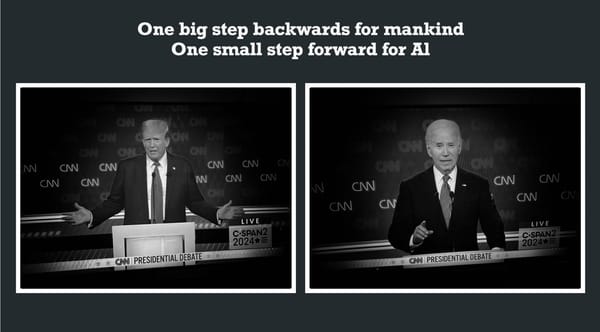Artist Feature Series: In Conversation with Andy Rosen
September 19, 2023 By Atreya Mathur
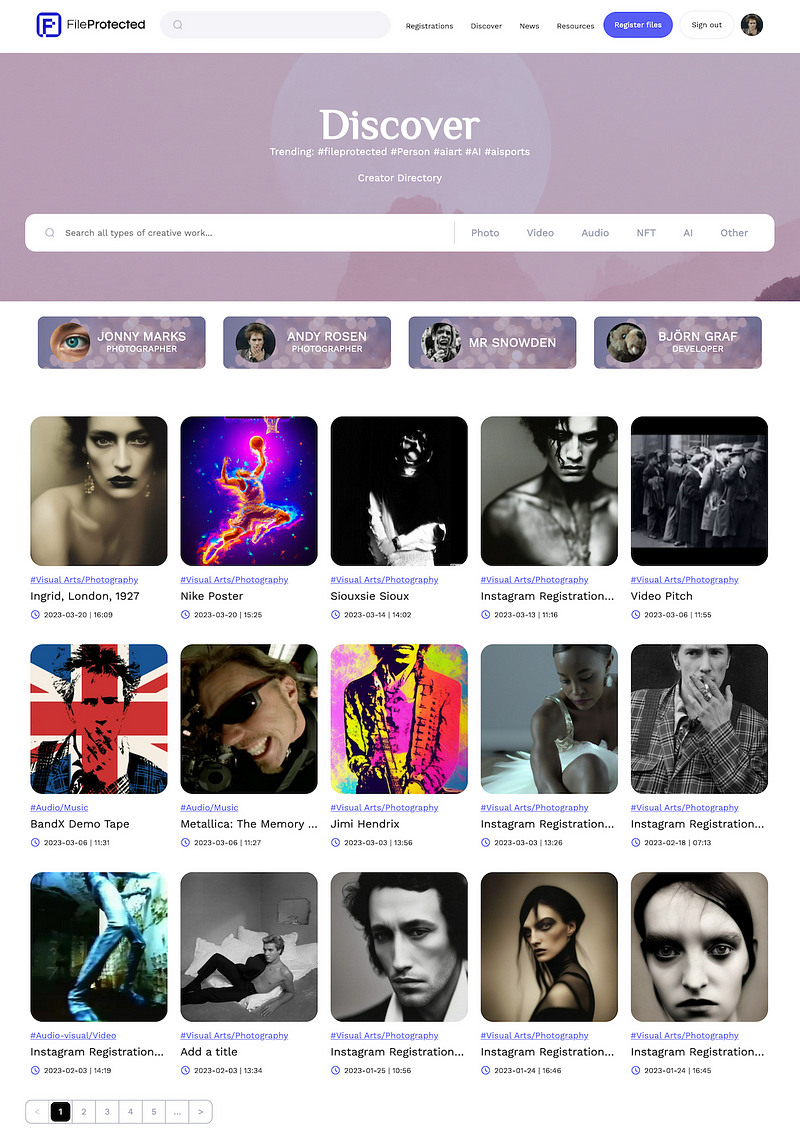
September 19, 2023
By Atreya Mathur
With the advent of technology, artificial intelligence, new means to create art, and the many copyright, contractual, and ownership issues that arise from it all, it’s interesting to think about what creatives can do with the law and without it to protect better (or monetize) their work. How can creatives take control of their art and minimize legal costs and infringement suits? Sometimes the law or copyright cannot solve all the many issues arising with artificial intelligence or authorship/ownership concerns, or it can be time-consuming and expensive to deal with it. What more can be done to take back control?
Andy Rosen is a photographer, artist and the founder and CEO of FileProtected, a platform that helps creative professionals protect and register their work on the blockchain as well as provide a marketplace with consolidated information about both the artwork and the artist. By using blockchain technology to provide proof of ownership and authenticity, creators can take ownership of their work and provide an audit trail of their art from the time of creation to the transfer of ownership or licensing of the work. Center for Art Law spoke with Andy Rosen to learn more about his creative endeavors, his thoughts on blockchain, copyright and artificial intelligence (AI) as well as his advice for artists and creatives to take back control of their work and better protect their art. Naturally,x the conversation included discussion of FileProtected as a platform and marketplace for creatives.
Could you let us know a little more about yourself? What kind of artwork do you create? What have your inspirations been?
I am originally from England but now reside in Los Angeles. I started out as a rock photographer. When I left school, the punk scene erupted. It was an incredible time because the punk movement touched everything from fashion to music to art to politics, becoming an iconic moment now firmly etched in history and contemporary culture. I did not realize it at the time. It was just great fun — the epitome of adolescent rebellion and style. Growing up, my one passion was photography. My father taught me a lot of old-school photography and darkroom techniques. I would spend hours developing negs and printing photos in the loft. After a few months of unemployment, I walked into Record Mirror with a portfolio of school plays, teenage adventures, and girlfriends. After reviewing my work, the editor gave me an assignment on the spot. I was just amazed. I had no idea what I was supposed to do. I just put one foot in front of the other and within a month I became a staff photographer for Record Mirror, a national music publication. At the time, there were only four national music publications: Record Mirror, Sounds, NME, and Melody Maker. I eventually ended up working for all of them. I had incredible access to the London music scene. I ended up working nonstop for a decade. The movie “Almost Famous” is very similar to my experiences. The punk scene did not last a decade; it was only two or three years, and I covered it extensively.
Every band I shot was one-of-a-kind and visually stunning. I had incredible access to the scene. I worked with most of the era’s iconic bands, including Johnny Rotten, Paul Weller, Ian Dury, The Clash, Siouxsie Sioux, Depeche Mode, Duran Duran, Simple Minds, and all major music publications and record labels. Portraiture photography was my passion. I looked up to photographers like Arnold Newman, Richard Avedon, Irving Penn, David Bailey, and Helmut Newman. Although I enjoyed photographing bands, I would always bring an extra camera with me and take individual portraits of the band members for myself. Interestingly, my exhibition consists primarily of 60 portraits (andyrosenphotos.com) I shot for myself, with only a few band shots. Although I am now heavily involved in technology, I am a traditionalist and purist when it comes to photography. I have embraced digital, but only as a means to an end with minimal digital manipulation using tools like Photoshop.
I moved to Los Angeles in 1989. I loved living there, but in terms of photography, there was only the film industry and the heavy metal scene at that time. It is not that I did not like the music; it is just that after the originality of the Punk era, all the bands looked the same to me (long hair and spandex pants), so my agent got me a job doing unit stills for feature films. After working on eight movies and not wanting to photograph heavy metal bands or leave LA, I co-founded The Underground with Peggy Steevensz a talent management and video production company. It was just as MTV was birthing, and video production was just about to take off. Timing and luck is everything in life. Chris Blackwell, who had founded Island Records in the 1960s (https://en.wikipedia.org/wiki/Chris_Blackwell), which was the first independent record company and led the way for many others like Richard Branson of Virgin Records. Chris introduced the world to Bob Marley, reggae music, U2, and many other greats. He was a true visionary. It was early days for video, but he liked what we were doing, and he formed a partnership with The Underground and became our main investor. I was again at the epicentre of another iconic cultural phenomenon, MTV. I ran the Underground for a decade, where we made many MTV videos (Ozzy Osbourne, Metalica, Van Halen, Marilyn Manson, Shania Twain, David Bowie Dave Mathews, Puff Daddy, Nine Inch Nails and Marilyn Manson) and commercials, American Express, Adidas, Nike, Fila, to name a few. The Underground showreel: vimeo.com/fileprotected/.
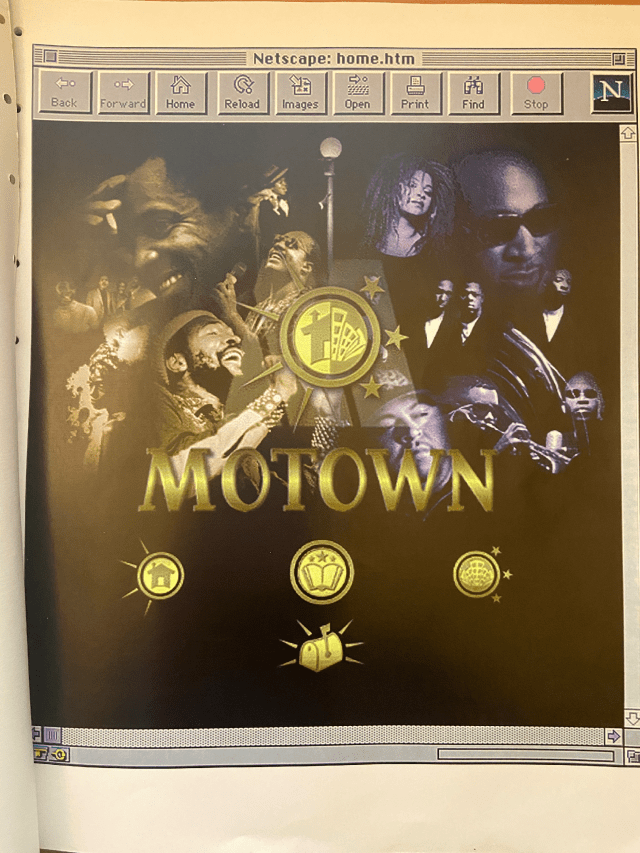
How did you get into digital asset management to help other creatives?
By 2000, the Underground was on full throttle, shooting many videos and commercials.Again, I found myself at the birth of another major moment in history, the dot com era.I started a web and software division, talent management, sound design, and a record label with Virgin Records. We put Motown online when Netscape was king. Who remembers Netscape?
We even co-founded a software company called thebrain.com and released Desktop Toys, the first toys for the desktop, in a deal with Electronic Arts. We were unstoppable, but times were changing, and I could see it. On the horizon, a tidal wave of disruption was building. For a few years, I had become increasingly aware of how technology was infiltrating every aspect of the industry. Access to affordable tools, faster and cheaper everything, the internet, processors, and so on. A post-production bay that used to cost $1000 per hour could now be replaced using a Mac and $200 in software. Stop-motion animation commercials with million-dollar budgets that took us months to shoot 30 seconds could be completed in weeks and at a fraction of the cost. The party was over. Mass access to cheaper tools resulted in increased competition and lower fees. I shifted my focus to digital production and software development from that moment. Using my experience in the media and entertainment industries, I began developing solutions to solve the growing digital asset management, collaboration, and file-sharing problems that were growing rapidly. Throughout my career, I have managed and collaborated with a diverse group of talented artists. I have learned that the only thing that can truly put an artist out of business is their refusal to embrace change, innovation, and the challenges that come with pushing the boundaries of their art and comfort level.
Have you ever copyright-registered your work? What are your thoughts on copyright for artists?
The digital age has ushered in remarkable opportunities for creators, but it has also introduced significant challenges in protecting and monetizing Intellectual Property (IP).The ease of reproducing and sharing digital content has led to a surge in unauthorized use, piracy and copyright infringement, often leaving artists and creators without due recognition, attribution or compensation.These challenges hinder innovation and trust in the digital marketplace and now threaten all creators and the whole ecosystem.
I have copyrighted some of my work, which mostly predates the Internet. Back then, there was a default level of protection; there was no Internet and no right-click and save. Anologue also controlled the speed of creation and, in turn, the volume of infringement we are now experiencing with digital.Today’s world is very different, and safeguarding digital content presents much more of a challenge.Copyright law never saw Instagram coming! 100 million images and videos are shared on Instagram every day. Because copyright laws were developed before the advent of digital technology, they are ill-equipped to deal with increasing digital issues. The sheer volume of content created and shared, combined with the complexities of international law and the global nature of the Internet, has made copyright enforcement a monumental challenge.
As a British citizen, and in contrast to the United States, I am not required to register my copyright with any official body in the UK because I receive instant copyright upon creation. In the United States, artists receive immediate copyright protection as well, but the “carrot” to register with the US copyright office is “statutory rights,” which means you have the right to a more significant award if you can prove your case, such as $150k per infringement. Still, there is no guarantee you will win. The catch here is that actual damages are often difficult to win without registration and following a strict schedule of events to qualify and fees. Many creators, including myself (andyrosenphotos.com), lack the financial resources to file an infringement suit, rendering copyright protections more theoretical than practical. It’s worth noting that the average cost of litigating a copyright infringement case in federal court from pre-trial through the appeals process is about $278,000, and there is no guarantee you will hit the jackpot. Regardless, most copyright attorneys will refuse to take on a case with a potential recovery of less than $30,000. It’s also worth noting that the majority of infringement cases for artists are, on average, under $30K. By the time you pay the legal costs, there might be very little left.
I believe copyright and its core principles are critical moving forward; who disagrees that artists should be protected and fairly compensated? However, copyright in its current form is not fit for purpose for the demands of immediate access, right-click, copy, and transfer in the digital age. Its incompatibilities with a digital world no longer provide a satisfactory solution for many, especially independent creators. It is prohibitively expensive, difficult to navigate, reliant on attorneys, and, in most cases, biased against the independent artist. Significant changes are required; another new convention will not suffice, and even if it did, it would take too long to implement because the process and politics, like copyright law, are built for an analogue world rather than a digital one. For copyright to truly serve its purpose in this new world, we need more than updates to an outdated solution — we need transformation. It would be foolish to expect the same old processes and policies to bring about this change.
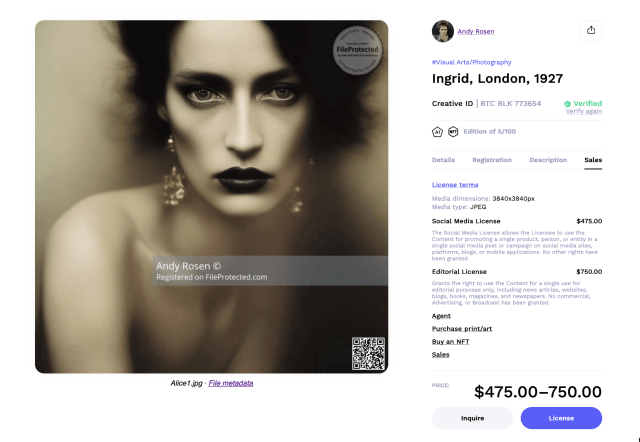
What about infringement more specifically as a wrong committed against an artist– what is the solution to remedy that wrong apart from copyright laws?
When it comes down to it, the most painful aspect of infringement is the erasure of your identity from that work. The Internet is a fantastic tool for increasing reach — whether for distribution, promotion or simply getting your name out there. However, without attribution, artists miss out on all of these benefits.
FileProtected takes a unique and proactive approach to address copyright infringement. Rather than immediately waving the legal stick at infringers, we understand that not all infringements warrant aggressive legal action, and we believe in finding mutually beneficial solutions for both rights holders and potential infringers. Instead of resorting to intimidating legal letters and demanding financial compensation, we offer a reverse solution through our Creative ID feature. When infringement occurs, our users have the option to send a positive email to the infringer, providing them with a link to the Creative ID associated with the content or a watermarked image with a QR code. This email informs them that they can use the content freely for non-commercial uses under one condition — to include the Creative ID link or watermarked image when sharing the content. This ensures proper attribution and directs users back to the creator and sales. By offering a clear and straightforward solution, we foster a cooperative environment that encourages compliance and fair usage of IP. This innovative approach not only helps protect the rights of creators but also promotes positive engagement, additional promotion, and revenue opportunities.
Have you ever worked with an attorney against another person for infringement?
Yes, I have and all were settled in my favour without having to go to court. The worst was when I photographed Simon Le Bon of Duran Duran for Ritz Newspaper (British Interview Magazine). While hanging out in the office one day, the editor threw me a stack of requests from record companies trying to get their artists into the prestigious newspaper. The editor asked me who I would put on the cover. It didn’t take me long; Duran Duran was the hottest band in the world at that point.
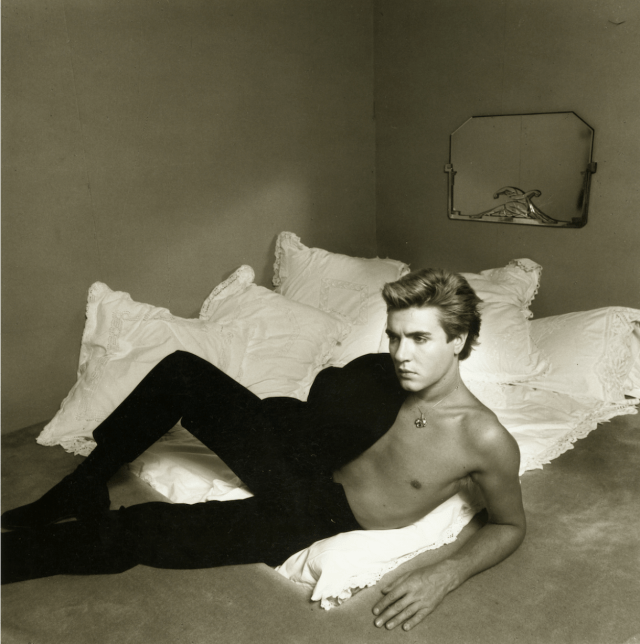
The deal I struck with these newspapers and magazines, which was not uncommon, was that they would give me access in exchange for first daily rights. I would own the copyright, but they didn’t pay me. If the image was in high demand, I would usually set up a secondary sale before publishing it in Ritz Newspaper. The session couldn’t have gone better; I hired a room in Blakes Hotel, the coolest hotel at the time, and got Simon to take his top off and pose seductively on a sunken bed. After the session, I licensed it to the Daily Mirror on the condition that they respected the deal with Ritz Newspaper. I told them they could only use the image after it was published in Ritz Newspaper, which was scheduled for the following week. Of course, they printed it the next day. Let’s say that everyone and their aunty attempted to sue me for copyright infringement (Mirror, Ritz Newspaper, record company, and band management). It never went to court because there was no dispute once my attorney set them straight. I owned the copyright and I was allowed to sell it, but I will never forget how difficult it was to prove that situation quickly and avoid the high cost of hiring an attorney to defend my rights. In legal disputes, the focus often shifts beyond just the IP itself. The context and events around an IP, what was discussed, downloaded, agreed on, etc. — often take centre stage, becoming as critical, if not more than the copyrighted material itself in a dispute or infringement case.

I had another more recent situation about a year or two ago where a newspaper wanted to use my photograph of Johnny Rotten, and I licensed it to them using an earlier version of FileProtected. The email feature of FileProtected was used to record all correspondence. We never discussed or agreed on online rights, which is significant because there is a distinction between publication rights and internet rights. When it came out, it was published in the newspaper and online. I emailed the photo editor and included the FileProtected audit trail and evidence of the transaction. Understandably, she was taken aback, realizing the potential financial ramifications of the oversight and the indisputable evidence I presented. But instead of dragging this into a lengthy and expensive dispute, I proposed a simple solution: a nominal fee and the integration of the FileProtected Creative ID link to the online image. Just like that, without the need for attorneys or extensive back-and-forths, the issue was resolved.
“Creative work becomes worthless if you can’t prove its ownership, authenticity or trust the seller.”- Andy Rosen, Interview with the Center for Art Law (2023)
In the context of AI-created works and lawsuits, what are your thoughts?
It’s a fascinating topic and one that directly intersects with the creative journey I’ve been on. When you speak of AI-created works, it immediately reminds me of my early days in photography. Just as AI is reshaping content creation, the punk scene was all about disrupting the status quo, pushing boundaries and challenging traditional norms. Back in my photography days, I had physical negatives. In today’s world, with digital replications and now AI recreations, the lines of ownership have been blurred.
Regarding AI-generated works and lawsuits, navigating this new territory cautiously is crucial.The rapid advancement of technology, particularly AI, is challenging our traditional understanding of Copyright and intellectual property.I believe it’s best to prioritize avoiding lawsuits, in most cases as we move forward with AI technologies. Technology is pushing us as a society into uncharted territories, and we must navigate them wisely instead of leaning on litigation as a default solution. Don’t get me wrong, I’m not advocating against copyright laws. They have played a vital role in safeguarding creators’ rights up until now. However, it has to be updated to complement a new digital world. Trying to fix a digital problem with an analogue solution might be the problem with Copyright; it’s like trying to fix a Tesla car with a spanner!
Regarding the US Copyright Office, in particular, it’s clear we need enhancements to better adapt to the digital age and the complexities introduced by AI, NFTs, and other emerging mediums. The existing structure is not sufficient, and with AI becoming increasingly prevalent, the legalities are only getting more confusing and complex. AI presents great opportunities for modern creators, but we must also be aware of the potential legal issues. Take photography, for example, which I am personally involved in. Suppose someone reproduces my work in a way identical to the original, created by AI, a camera, or a toothbrush; we enter the potential for copyright infringement, regardless of the technology or the creation method. A significant part of the complexity stems from the current focus on the method of acquiring content for AI training. While this is a critical concern, it is eclipsing the fundamental point of copyright cases — the comparison of the supposedly infringing work with the copyrighted one. The point is that copyright infringement, as I understand it, comes down to comparing the final creation, not pre-creation. It’s obvious why the current legal focus is on pre-creation processes, machine learning, datasets, and scrapping content all before creation, but I am not so sure it will succeed and might, in fact, complicate the issue further, spurring even more lawsuits. Despite the inevitable legal battles, I’m not convinced that court rulings alone will solve these emerging challenges. The sheer volume of increasing AI lawsuits, combined with the existing copyright cases that have already been choking up the courts, could highlight the flaws of an outdated copyright system and the failure of the legal system as a whole. Time will tell; unfortunately, it might be years, if not decades, at this rate. Innovative solutions like Blockchain can support Copyright, provide additional layers of protection, help address some of the unique challenges posed by digital ownership, and help solve and support Copyright’s well-documented shortfalls.
Copyright and the law must be reimagined and realigned to meet the demands of a digital world; building on an already broken foundation will fail and hinder rights, innovation and creativity. Moving forward, it’s about attribution and ensuring that artists get the recognition they deserve and be fairly compensated. This is something that resonates with me deeply, given my history.It’s essential moving forward to strike a fine balance between securing intellectual property, encouraging innovation and protecting creativity.
However, in its current form, Blockchain doesn’t replace traditional copyright mechanisms. The legal system, especially in the U.S., is rooted in registrations with the U.S. Copyright Office. Companies presenting blockchain as the ultimate solution are offering a tool that’s yet to gain full legal recognition. But I’m hopeful. I see the future where blockchain will complement our current copyright systems and even supersede them; it offers solutions that ensure trust, ownership, attribution and transparency. As someone who’s been a creator, copyright cannot be just about exclusive rights but providing credit where credit is due. After all, at its heart, the spirit of copyright is to incentivize and reward creativity, not hinder it!
“I’m just thinking about being alive in 2023 and being at the birth of AI and the birth of a new Art movement happening in my lifetime! That’s just incredible, and it’s magnificent to be part of it.”- Andy Rosen, Interview with the Center for Art Law (2023)
What is FileProtected? How did you come up with the concept? What is the purpose of the platform?
The concept for FileProtected was born from my career working extensively within the creative industries, first as a photographer, then as a content producer and founder of the Underground, a video production company that rode the birth of video and the MTV music video era. FileProtected was Co-founded by Andy Rosen, Björn Graf, and Peggy Steevensz. Then, as we moved from analogue to digital production, I transitioned from an analogue producer to a digital producer and software developer, building digital asset management solutions for the creative industries. I shifted from moving atoms to moving digital bits around. FileProtected evolved from several software builds, all built around moving and protecting digital content. The big turning point was in 2017 when I discovered the Blockchain. It was the missing link to what I was trying to solve, an aha moment that hit me like a stone. Blockchain brings ownership and scarcity, which brings value to digital creations for the first time. This newfound scarcity adds value to digital works and opens up new opportunities and avenues for monetization.

FileProtected is a passport for creative work. It provides an instant and automatic content registration service. It uses the blockchain, timestamps, and digital fingerprints to make copyright ownership, provenance, and authenticity indisputable. It then offers simple tools to help protect, inform, share, transact, deliver, and monetize content anywhere it goes. FileProtected provides a comprehensive, blockchain-powered solution to the pressing challenges creators face in the digital age. It offers a robust, adaptable solution that prioritizes the rights of creators, protects against infringement, and provides cost advantages for both creators and buyers. FileProtected empowers creators to protect their IP, ensure proper attribution, facilitate monetization, and foster trust and integrity in a digital marketplace. By leveraging the immutability and transparency of blockchain technology, FileProtected offers a robust, future-proof solution for all digital content, including emerging digital mediums like AI-generated works and NFTs.
FileProtected offers more than just protection; it enables content creators to take back control of their IP, allowing them to monetize their work directly through the Creative ID system and our direct-to-creator marketplace. Unlike traditional platforms that impose hefty commissions, FileProtected’s marketplace operates with a creator-centric approach, empowering creators with the flexibility to set their own prices, retain 100% of their earnings, interact directly with their customers and realize the full potential of their work.
FileProtected is not just about protection; it’s about empowerment. With FileProtected, creators can confidently navigate the digital landscape, knowing their IP is registered, authenticated and rights represented. In the current digital landscape fraught with complexities and uncertainties, where content gets shared, reshared, and reshaped at the speed of a click, FileProtected offers a forward-thinking solution that directly addresses the needs of digital content creators. Our value proposition lies in addressing the challenges of the present and anticipating and helping to mitigate those of the future.
How does the platform work in the context of NFTs or Artificial Intelligence?
The digital age has introduced an exponential growth of content and new mediums, such as AI-generated works and non-fungible tokens (NFTs), which have compounded the complexities of copyright law, accelerating instances of infringement and posing significant threats to creators’ livelihoods. Traditional copyright protections are increasingly proving inadequate, struggling to provide copyright protection for emerging mediums like AI and NFTs. These modern creators need to protect their IP, and FileProtected offers a simple, cost-effective solution to register and future-proof ownership and much more, regardless of traditional copyright protection.
For example, when you buy an NFT, you have a link to something, and you don’t really know the ownership– no history, no origin, so while we’re not focused on NFTs, we support NFTs and all emerging mediums not protected by copyright law. We document the interaction, collaboration and creation before an NFT is minted (or any creation), so basically, you have the Creative ID, which can referenced in the smart contract, providing the origin point and aggregating as much metadata, context and proof as possible. We support the AI community and all emerging mediums because they still need to define that they own something — let the lawyers argue later on if it’s legally theirs or not!
How does FileProtected serve as a marketplace for artists?
Once a file has been registered in the Blockchain, users can select and publish content to their showroom or FileProtected’s IP marketplace to promote, sell, and license creative content. Buyers can search and discover content, be informed of copyright, usage and terms, instantly inquire, license, and buy directly from the creator, delivering benefits and savings to both parties. By joining our marketplace, creators and buyers can experience the peace of mind that comes from a trusted platform dedicated to safeguarding the authenticity and ownership of creative works. FileProtected’s marketplace enables users to set their own prices, retain 100% of their earnings, and interact directly with their customers, providing buyers with a more cost-effective and transparent way to transact with digital content. Our approach aims to disrupt traditional market dynamics and create a mutually beneficial, trusted ecosystem for all stakeholders. FileProtected is focused not on competing with Getty Images or other stock agencies but on providing solutions for content creators to operate independently, and to be fairly compensated for their art.
How would you say FileProtected stands out as a platform and differs from generally registering something on the blockchain or copyright protecting your work?
Several platforms offer bits and pieces of what FileProtected delivers. However, what truly distinguishes FileProtected is its comprehensive solution, tailored specifically for the creative community. While many platforms limit themselves to just blockchain registration or basic copyright proof of existence, FileProtected delves deeper. We offer a rich feature set that empowers users to do more with their registered content, providing tools and opportunities far beyond mere registration. FileProtected represents the fastest, easiest, and most cost-effective way of registering and establishing ownership of digital IP, including but not limited to inventions, original literary and artistic works, concepts, and ideas. FileProtected use of the Blockchain is one part of an integrated feature set built to meet the demands of a new generation of digital content creators. This versatility is unmatched in the industry and is one of the hallmarks of the FileProtected experience. Furthermore, our direct-to-creator marketplace is not just a feature; it’s a game-changer. By committing to zero sales fees, we are redefining the profit dynamics, ensuring that creators retain the full worth of their hard-earned work.
Has FileProtected been launched? Have you been able to assist artists with it so far?
FileProtected is fully developed and operational; we’ve been immersed in a private beta phase for the past three months, collaborating closely with a wide range of creators. This includes photographers, filmmakers, musicians, screenwriters, journalists, and designers, both seasoned professionals and passionate amateurs. There are two versions of FileProtected that we’ve developed. The “all features” version provides a comprehensive suite of tools. We’ve also developed an “Instagram Only” version (fileprotected.com/instagram which we will be launching first. This streamlined version focuses on protecting and monetising Instagram content and making the registration process automatic. Users simply need to incorporate the hashtag #fileprotected when posting their content, and our system takes care of the rest. The work is instantly registered on the blockchain and synced back to their FileProtected account. We’ve even integrated features that allow users to retroactively register content they’ve shared on Instagram in the past. Instagram only users will be able to upgrade to the full version at any time. If you go to fileprotected.com or fileprotected.com/instagram you can sign up for early access.
How do you think artists or creatives can take more control of their work and better protect their work?
Artists and creatives living in today’s digital age face an expansive and unpredictable landscape when it comes to maintaining control and protection over their work. For me, the first step to protecting creative work is to firmly establish ownership, authenticity and attribution.
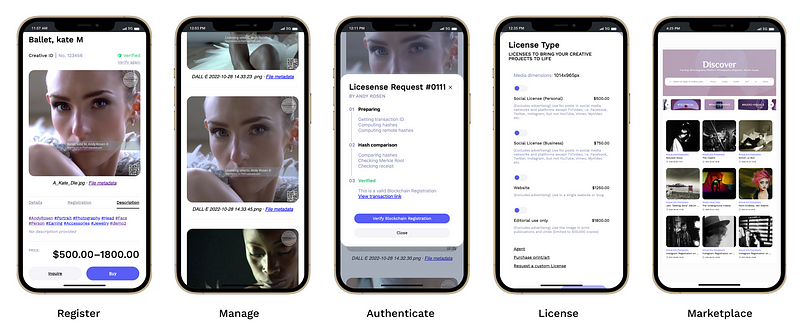
The protection of rights must start with the clarification of rights. Keeping detailed, comprehensive and easily accessible records is essential — saving time and money in proving “who came first” is vital in any infringement dispute. Clarifying your ownership is the first stage with or without copyright. There are many ways of doing that: I think that the blockchain is just a gift, and I don’t think anyone can argue against it that it’s a very effective way of documenting things. For Creators, blockchain technology has the potential to change the status quo dramatically in terms of the control they have over their work, in particular for copyright protection, authentication and attribution. Cryptographic methods further support this by providing that what you’ve registered is authentic and remains tamper-proof, offering a transparent and verifiable chain of ownership. While the traditional method of copyright registration still holds its value, it’s essential to acknowledge the evolving challenges in the digital space. To illustrate, modern-day photographers might capture thousands of images in a single shoot. In earlier times, given the high costs associated with photography, the number of images would be significantly less. In the current scenario, copyrighting a vast amount of digital content is cumbersome, not practical and cost-prohibitive. But this doesn’t diminish the need for control and proof of ownership. It could range from preventing unauthorized commercial use to objecting to aligning one’s work with certain political or social ideologies or for the filing of DMCA takedown notices, as example. The more context and metadata anchored to a digital file, the closer we come to the origin and truth. At FileProtected, we aggregate exhaustive metadata and context, including aligning with Adobe and the Coalition for Content Provenance and Authenticity (C2PA). The point is that in the emerging digital era, there is more than securing copyright; origin, trust and authenticity are becoming more or as important as copyright. While traditional copyright methods still have their place, the digital age demands a more agile and comprehensive approach to protecting creative work.
How would you address it in regards to new technology and social media?
Protection has become an ever-evolving challenge regarding new technology and social media. While bringing about countless opportunities for creators, the digital era has also ushered in challenges that didn’t exist a few decades ago. When it comes to sharing your work online, the truth is harshly simple: if it’s visible, it’s vulnerable. This isn’t just a tech problem; it’s a human one. Our digital environment has democratized access to information but has also made protection more difficult. Many artists and creatives grapple with how to present their work online while ensuring its protection. While introducing heavy restrictions or barriers to content might offer some level of protection, it can inadvertently hinder its reach and value to audiences. In my journey, I have embraced a more open-minded perspective towards online content sharing.
Surprisingly, there have been many instances where content infringement has been positive and not negative. There’s an unanticipated upside to infringement; in some cases, it can amplify reach and even lead to unexpected financial gains. Several times, I’ve found my work online that I wasn’t even aware of, leading to new opportunities, audiences and sales. Contemporary tools like reverse image searches enable us now to trace our work’s digital footprint, allowing for better oversight. Still, complete protection remains elusive. It’s a complex problem: How do you balance accessibility and protection? Major infringements, such as unauthorized use by large magazines or corporations, can still be concerning. Still, the question remains: is it worth the emotional, financial, and time investment to pursue lengthy litigation? For many, including myself, the answer is a resounding “no”. The key, perhaps, is a paradigm shift. Rather than approaching the digital realm with a defensive stance, maybe it’s about finding a middle ground — leveraging the digital space’s advantages while remaining vigilant and proactive in protecting one’s work. In this evolving landscape, it’s less about building impenetrable walls and more about navigating with awareness, adaptability, and resilience.

What about how this all plays into artificial intelligence?
The convergence of artificial intelligence (AI) with the creative sphere presents both a challenge and an opportunity for artists. The fear of AI and misinformation often dominate conversations, overshadowing the potential it holds. While many in the creative space are apprehensive about the proliferation of AI, we need to reorient our perspective to understand its implications better. Today, there’s a democratization of creative tools, making it easier than ever for individuals to enter the world of content creation. Remember, years ago, becoming a photographer entailed mastering not just the art but the complex science of photography — chemicals, lighting intricacies, and more. But now, technology has simplified these processes. Devices like iPhones have enabled everyone to capture moments, and software like Photoshop enables everyone to produce high-quality work with little or no skill sets. The ease of access to these tools means a surge in content, with many often mimicking popular styles and trends. This ‘echo chamber’ effect is more the result of easy access to tools rather than AI’s influence.
That being said, AI’s transformative power can’t be understated. While many fear AI might stifle human creativity, I hold a contrary belief. By automating and streamlining certain processes, AI can potentially free artists from the ‘friction’ — the mundane, repetitive tasks — allowing them to dive deeper into pure imagination and original thought. The real essence of creativity is the uniqueness of human thought and expression, something machines have yet to replicate. Furthermore, AI’s growth doesn’t come without its set of challenges. The legal landscape around AI is increasing rapidly. As AI proliferates, we can expect legal dilemmas to multiply, presenting a field day for attorneys and the slowdown of innovation. The rapid evolution of technology is always followed by a legal catch-up phase. But the crux here is adaptability. The discourse around AI is in its infancy, and while it is a central topic today, the technological frontier is ever-evolving. Soon, quantum computing and other innovations will come into the limelight, bringing their own sets of opportunities and challenges. While AI’s rise is undeniably transformative, it’s important for artists to see beyond the immediate challenges, fears, and misinformation. As creatives, our focus should remain on innovation, exploration, and originality, using technology as an enabler rather than a hindrance. The future holds promise, and with the right mindset, we can harness the power of AI and other emerging technologies to elevate the creative process with the fusion of human ingenuity and machine intelligence, giving birth to the unimagined and possibly the most exciting moment in art history.
The goal of FileProtected is to help creators strike a careful balance between protecting their IP from unauthorized use and encouraging innovation, commerce and fair compensation for all creators. Creating a better system for determining ownership, attribution and integrity of digital work will reward and protect creation, one of the primary goals of copyright law in the first place and now essential for all creators and creative industry stakeholders in the digital age.
Center for Art Law would like to thank Andy Rosen for taking the time to speak with us and sharing his story, business process and thoughts on copyright, AI, blockchain and better protecting the work of artists with us.
This interview was conducted by Atreya Mathur, Director of Legal Research in connection with the Center for Art Law’s Artist Feature Series and The Interview Project where we interview artists and art professionals to learn about their work, inspirations, legal perspectives and related issues.
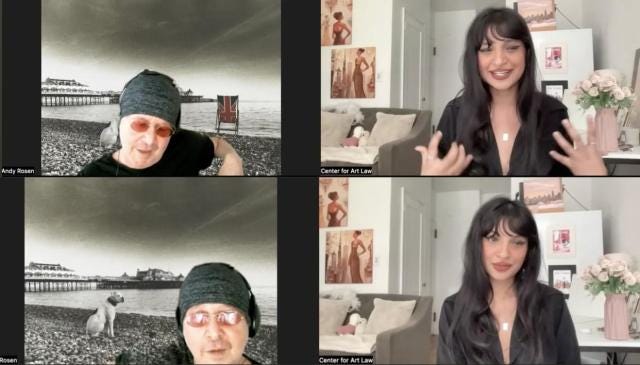
About the Author
Atreya Mathur is the Director of Legal Research at the Center for Art Law. She was the inaugural Judith Bresler Fellow at the Center (2021–22) and earned her Master of Laws from New York University’s School of Law where she specialized in Competition, Innovation, and Information Laws, with a focus on copyright, intellectual property, and art law.
Additional Resources
- FileProtected: https://www.fileprotected.com/
- Andy Rosen, Photographing Duran Duran nearly ended in spilt blood and broken bones, battling over copyright, Medium (March 12, 2018): https://medium.com/sendergram/photographing-duran-duran-nearly-ended-in-spilled-blood-and-broken-bones-battling-over-copyright-81a880bfc366
- Andy Rosen, Video Report on images uploaded on Flickr, Rocketboom cut down: https://vimeo.com/841289339
- Interview with Andy Rosen, art market guru (May 24, 2018): https://www.artmarket.guru/le-journal/blockchain/sendergram/
- Episode 135: Andy Rosen — Music Photographer shares stories of Punk, The Jam, Setting Sons plus never-before-seen-images…, The Paul Weller Fan Podcast: https://paulwellerfanpodcast.com/episode-135-andy-rosen/





